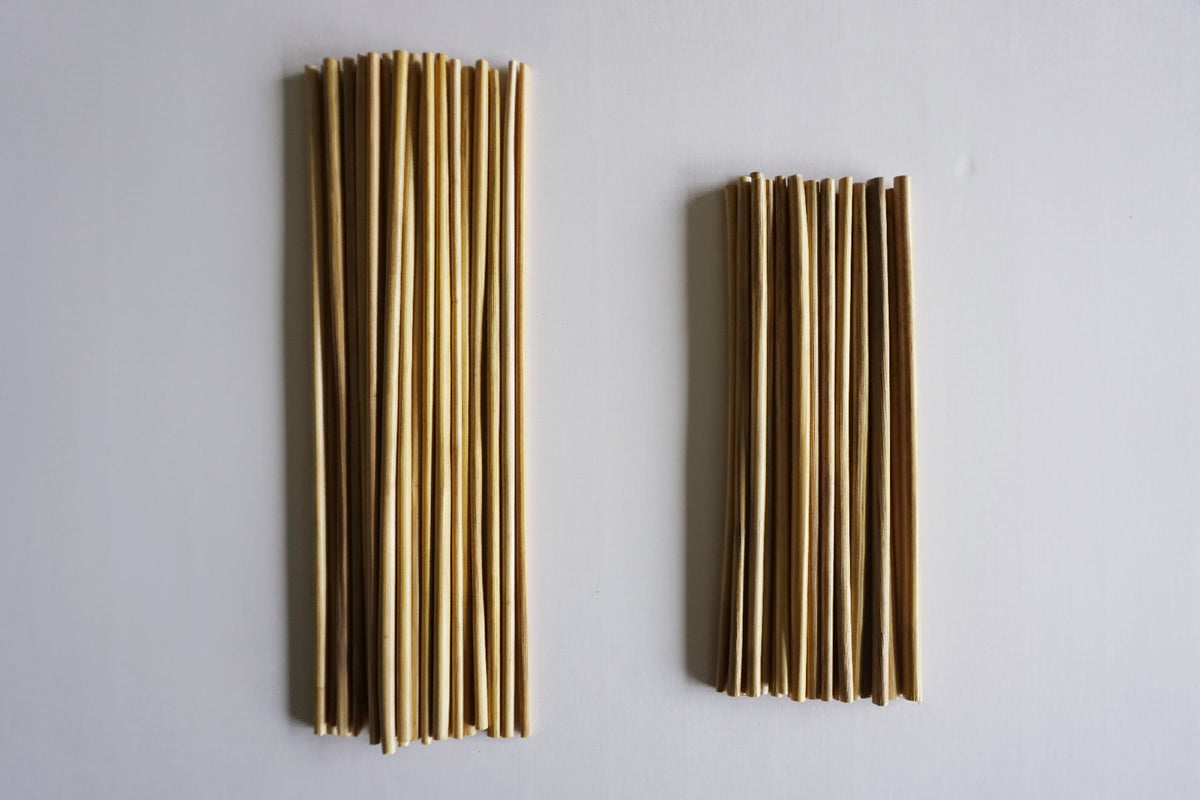

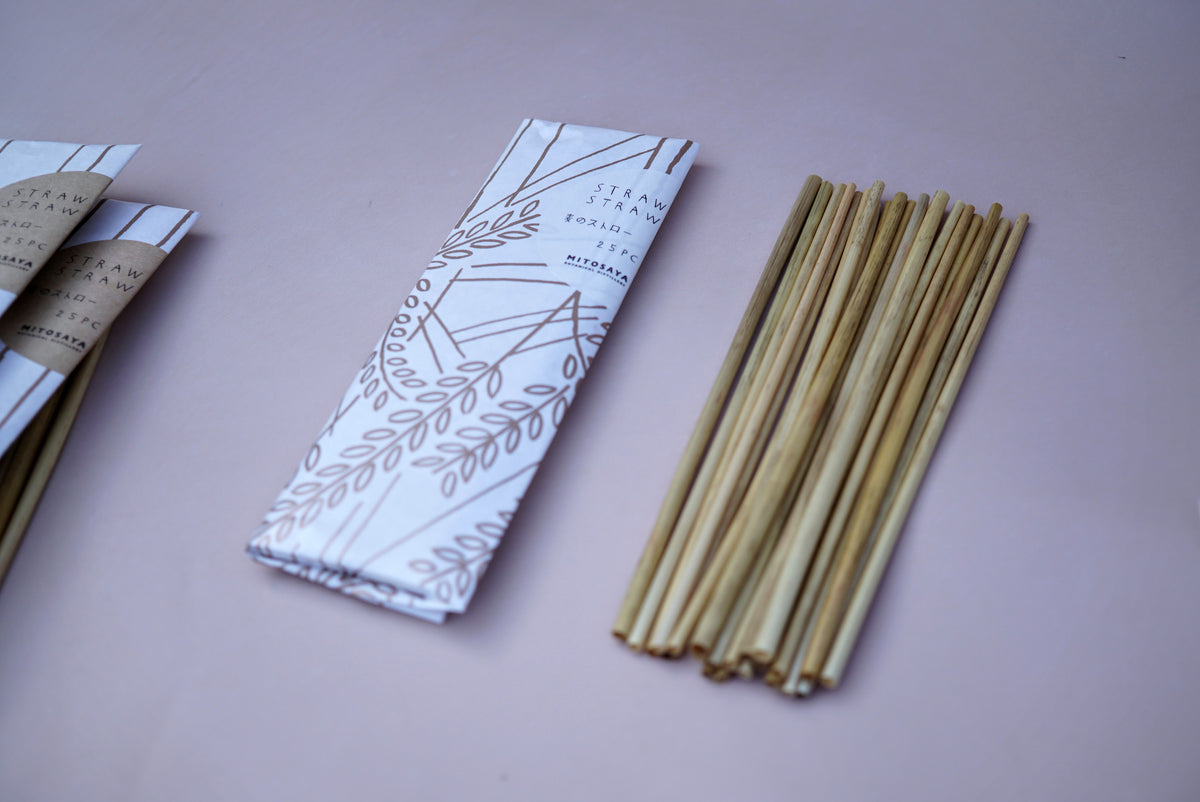
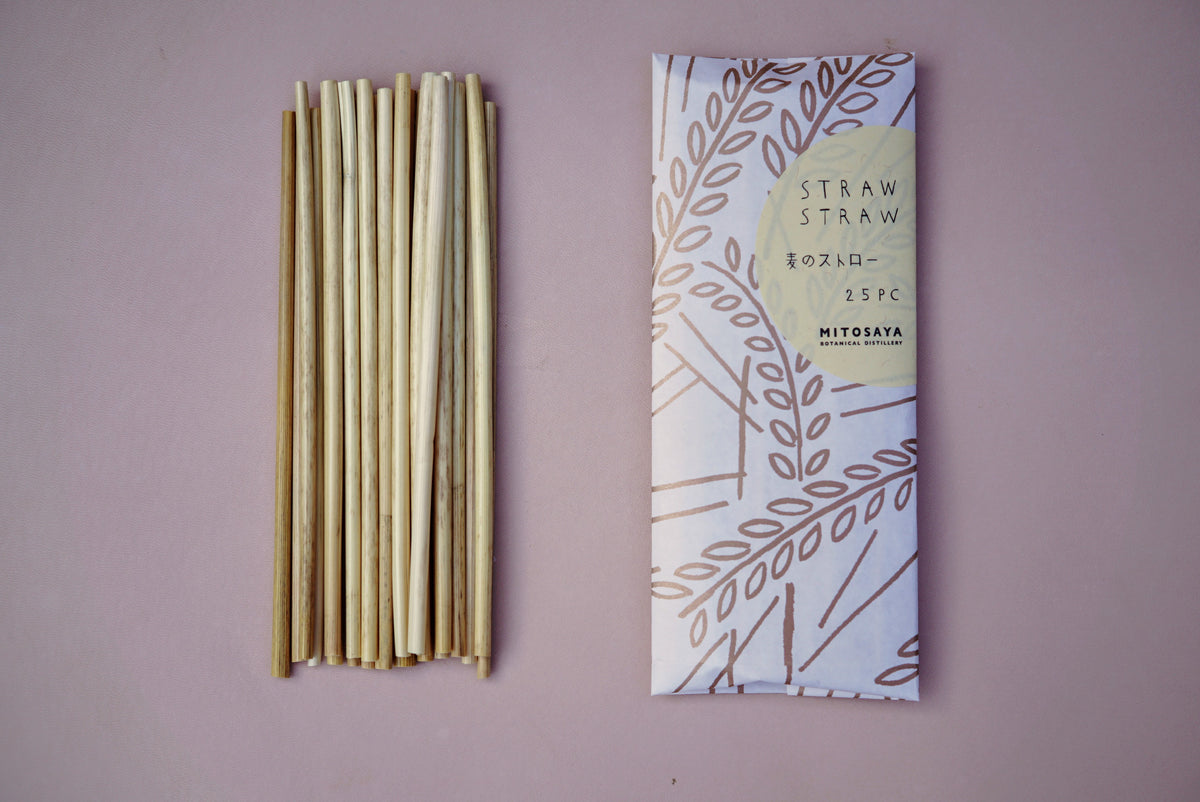
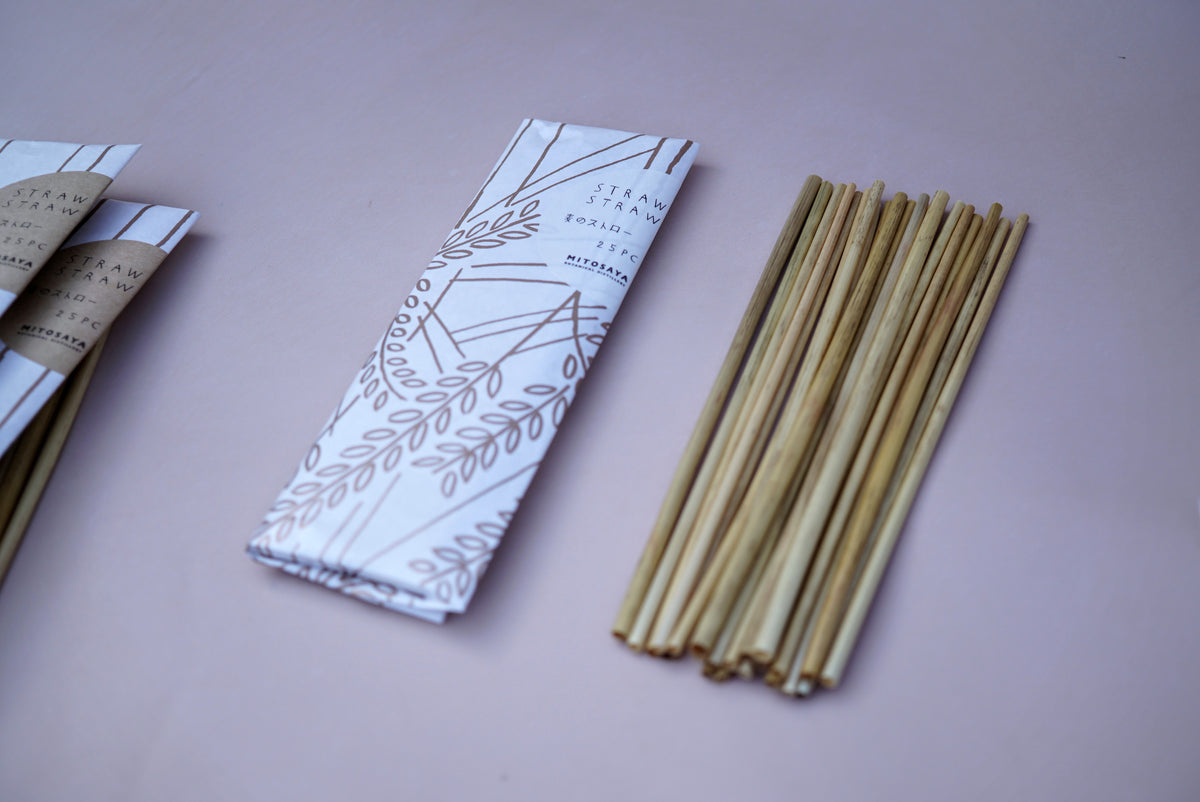


SHOP





自分たちで育てた自然栽培のライ麦を使った、麦わらのストローです。
一昨年の秋に地元の野口さん、そしてmitosayaの自然生活の先生、AMBESSAの君島さんと共にはじめたライ麦の栽培。昨年は別の場所にこれまでの数倍の広さの畑を借りることができました。土地を耕し、畝を作る。冬が来る前に麦を蒔いて、少し大きくなってきたら踏む。雑草はときに取る。こうした作業を経て今春、育ったライ麦は2mの高さにもなりました。
梅雨の前の晴れた日に、Farming Fridayチームの助けもあって、皆の手を使って収穫しました。
収穫した麦は、麦の部分はハーベスタといわれる機械で乾燥後にできるだけわらを傷めないように気をつけながら脱穀。100キロ少しの量の収穫量に対して、脱穀後のわらはものすごい量です。
今年は大多喜町に隣接するいすみ市に拠点を持つ福祉施設、ピア宮敷にストローの加工作業を依頼しました。四方を田んぼに囲まれた緑豊かな場所で、入所施設と作業所、カフェを運営。「地域社会に必要とされる施設」をモットーに住民とのつながりを模索しながら、いすみ産の原料を使ったごま油やジャム、はちみつの製造販売、地元の小学校との農業を通じた交流、絵画や木工作品の展示など、独自の取り組みを行っています。
運びこんだ麦わらは、まず穂の部分を落とし、先の部分を切って3mm以上の太さがある部分を決まった長さに切り出します。3mm以下の細い部分はストローとして使うには難しく、さらにところどころにある節を避けながら長さを確保してもらう必要があるので、1本1本を目で見て、手で切るという作業が必須。
見学に行った日には利用者の方が8人、職員の方が3人で作業を行っていました。ひとりひとりができる作業の種類に合わせて2カ所に分かれ、ハサミを使う人、検品をして束ねる人などの役割分担がなされています。太さと長さをチェックするために使っている木製の治具は、職員さんお手製。15cmのものと20cmのものを作る「STRAW STRAW」の規格に合わせて作ってくれたそうで、効率よく作業ができるのはもちろん、丁寧に作業してくださっているその気持ちまで伝わってくるようなあたたかみも感じます。
こういった福祉作業所はそれぞれが単独で仕事を請け負うのがほとんどなのだそうですが、ピア宮敷では今、この常識を覆す仕組みづくりに取り組んでいます。近隣の2市2町にある事業所に声をかけ、作業を皆で分け合って分担することで、より多くの「STRAW STRAW」を作る体制を整えてくれています。
2つの長さで切り揃えられた麦は、煮沸した後に乾燥機で時間をかけて乾燥します。消毒され、硬く締まったわらの表面にはつやが出てきます。
パッケージは2021年に開催した、山本祐布子 x mitosaya 「NOURISH」展の際に制作したポスターの余剰を使いました。ラベルの文字はNigel Peakeによるもの。ストローの由来がわらであることをSTARAW STRAWという繰り返しの名前が伝えます。丸いシール一枚が表のタイトル、裏の品質表示を兼ねています。
関わる人たちの思いものせた、手作りの麦のストロー。1本1本異なる自然素材の心地よさが、ドリンクの楽しみを無限に広げてくれます。
飲食店で使用していただくことや、小売店等で自社の不要紙、梱包紙でパッケージしてもらうことなどを想定した、数量をまとめたBulk Packもご用意しています。
一粒の麦がいつかウィスキーになる。私たちの夢の第一歩になる麦のストローです。
長さ:約15cm / 約20cm
内容量: 25本 / 500本
原材料:自然栽培のライ麦(千葉県大多喜町産)
製造・販売者:mitosaya株式会社
協力:AMBESSA & CO
自然素材のため形状、状態にばらつきがあります。
高温多湿をさけて保管してください。
小麦アレルギーの方のご使用はお控えください。
These straw straws are made from naturally grown rye that we grew ourselves.
We started growing rye in the fall of the year before last with Mr. Noguchi, a local farmer, and Mr. Kimishima of AMBESSA, a teacher of natural living at mitosaya. Last year, we were able to rent a field several times larger than the previous one in a different location. We plowed the land and made rows. We sow the wheat before winter comes, and step on it when it grows a little. Weeds are occasionally removed. After all this work, this spring the rye has grown to a height of two meters.
On a sunny day before the rainy season, with the help of the Farming Friday team, we harvested the rye with all hands.
After the wheat was harvested, we used a harvester to dry the wheat and then threshed the straw, taking care not to damage the straw as much as possible.
This year, we asked Pia Miyashiki, a welfare facility based in Isumi City adjacent to Otaki Town, to help us process the straws. In a lush green area surrounded by rice paddies on all sides, they run a residential facility, a workshop, and a cafe. With the motto of ""a facility that is needed by the local community,"" the facility is seeking to connect with the local residents, and is engaged in unique activities such as the production and sale of sesame oil, jam, and honey using raw materials produced in Isumi, exchanges with local elementary schools through agriculture, and exhibitions of paintings and woodwork.
When the straw is brought in, the ears are first removed, and the tips are cut to a specific length, which must be at least 3 mm thick. 3 mm or less is too thin to be used as a straw, and the straw must be long enough to avoid knots. The process of seeing each straw and cutting it by hand is essential.
On the day we visited, there were eight users and three staff members working. They are divided into two sections according to the type of work each person can do, and the roles are divided into those who use scissors and those who inspect and bundle the products. The wooden jig used to check the thickness and length of the straws was made by one of the staff members, and was made to meet the standards of the ""straw straws,"" which are made into 15cm and 20cm strands. I can feel the warmth of the work.
It is said that most of these welfare workshops undertake their work independently, but Pia Miyashiki is now working to create a system that overturns this common sense. They are now working to create a system to overturn this common sense. They have approached the workplaces in two neighboring cities and two neighboring towns, and by sharing and dividing the work among them, they have set up a system to make more ""straw straws.
After the wheat is cut in two lengths, it is boiled and then dried in a dryer over a long period of time. The surface of the disinfected, hardened and tightened straw becomes glossy.
For the packaging, I used the leftover posters I made for the Yuko Yamamoto x mitosaya ""NOURISH"" exhibition held in 2021. The text on the label is by Nigel Peake. The repeated name, STARAW STRAW, tells us that the straw is derived from straw. A single round sticker serves as the title on the front and the quality label on the back.
Each straw is handmade with the thoughts and feelings of the people involved, and the comfort of the natural material that differs from one straw to the next expands the enjoyment of drinks to an infinite extent.
Bulk packs are also available for use in restaurants, and for retailers to package the straws with their own unwanted paper and packing paper.
A grain of wheat will one day become whiskey. This barley straw is the first step of our dream.
Length: approx. 15 cm / approx. 20 cm
Contents: 25 straws / 500 straws
Ingredients: Naturally grown rye (grown in Otaki-machi, Chiba Prefecture)
Manufactured and distributed by: MITOSAYA Co.
Cooperation: AMBESSA & CO
Due to the nature of the material, the shape and condition may vary.
Please keep away from high temperature and humidity.
Please refrain from using this product if you are allergic to wheat.
受取状況を読み込めませんでした





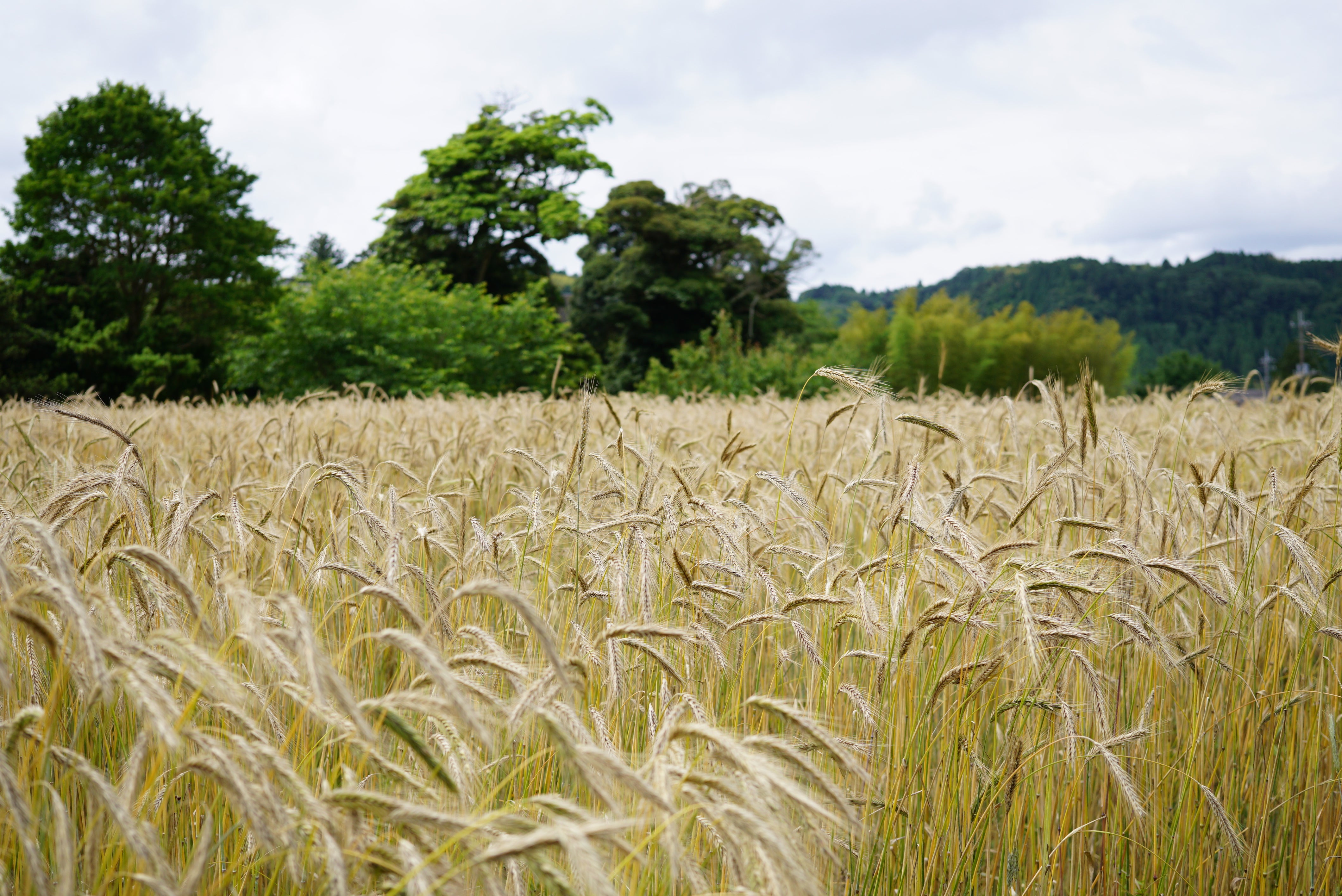
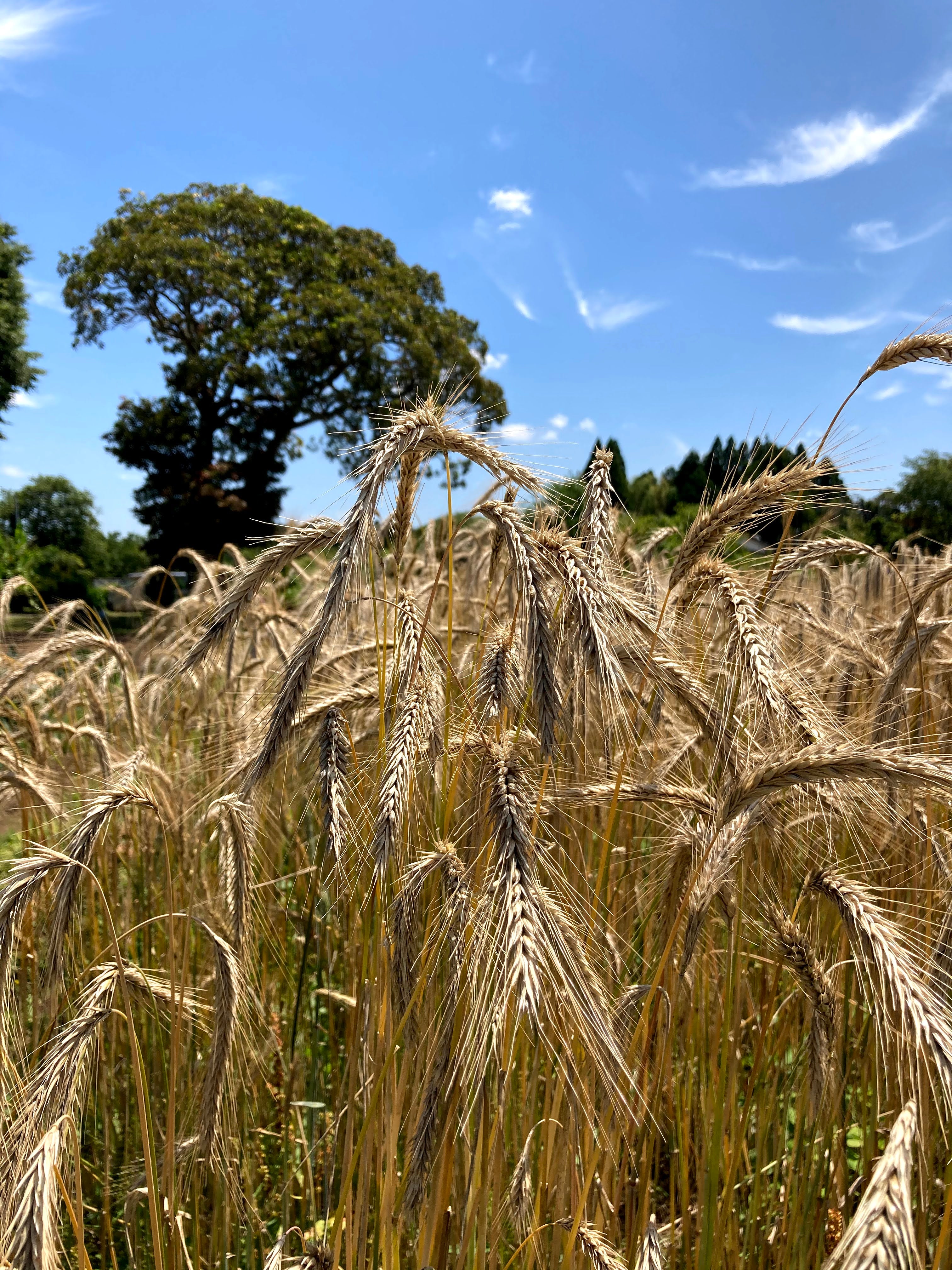
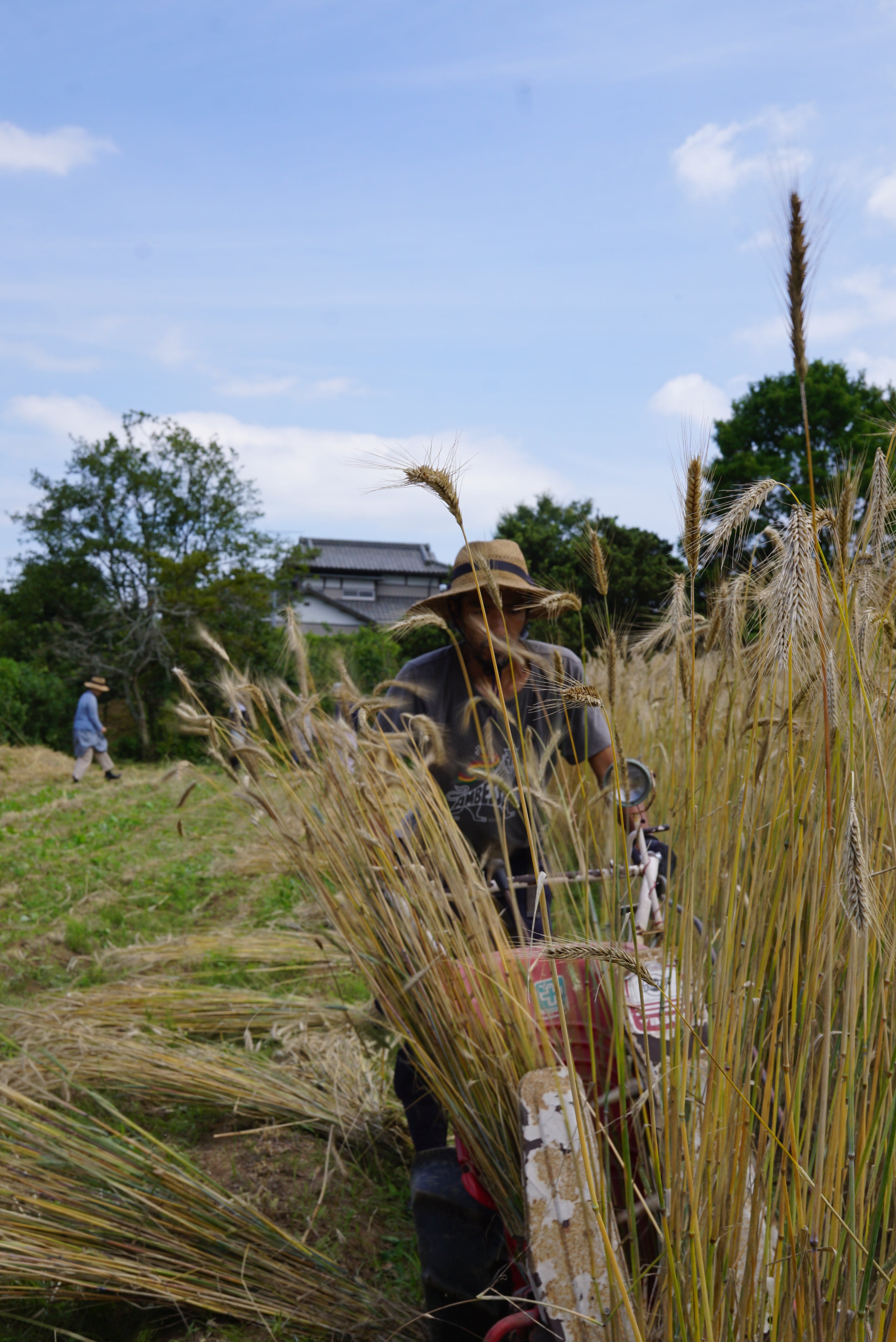
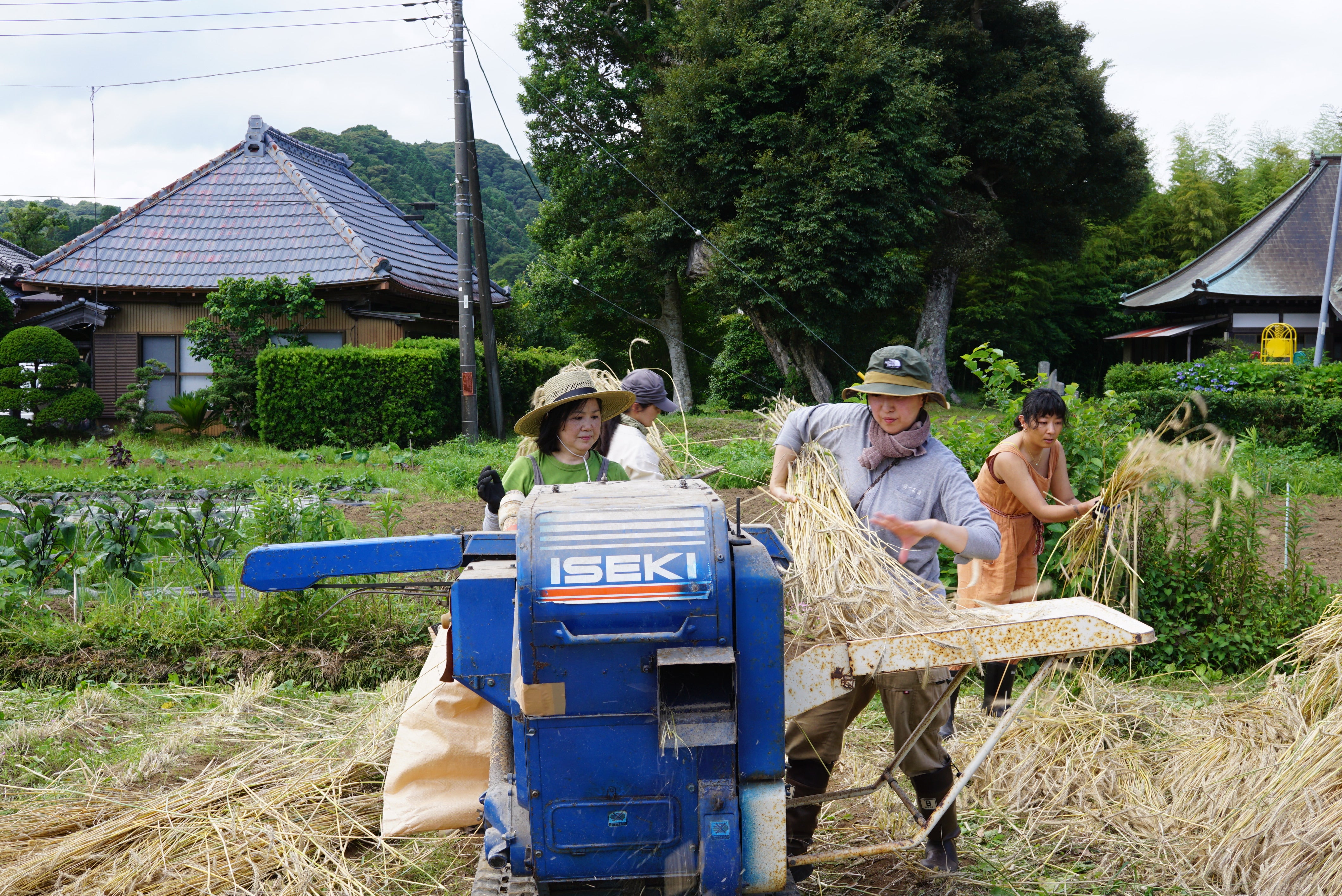
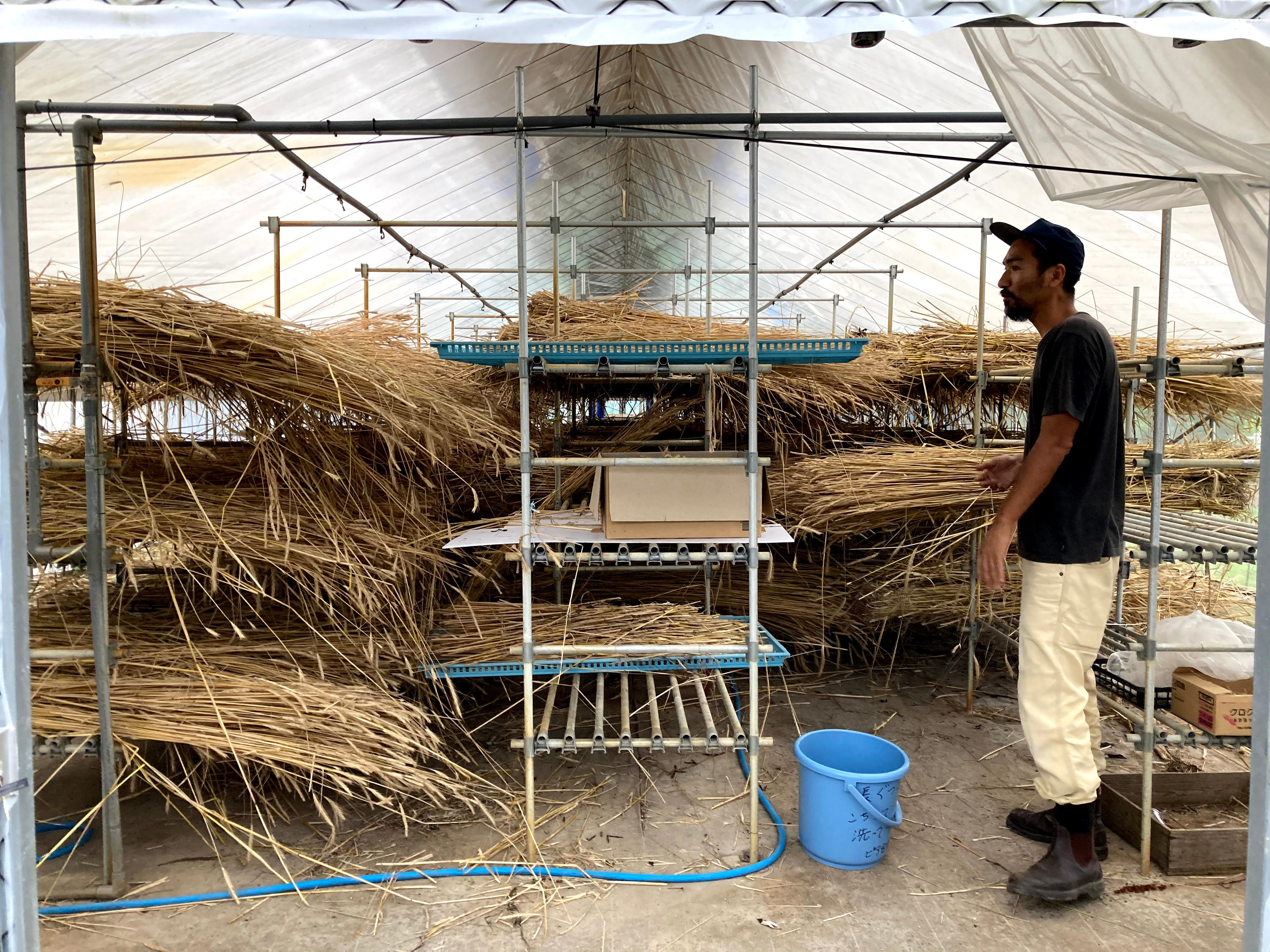
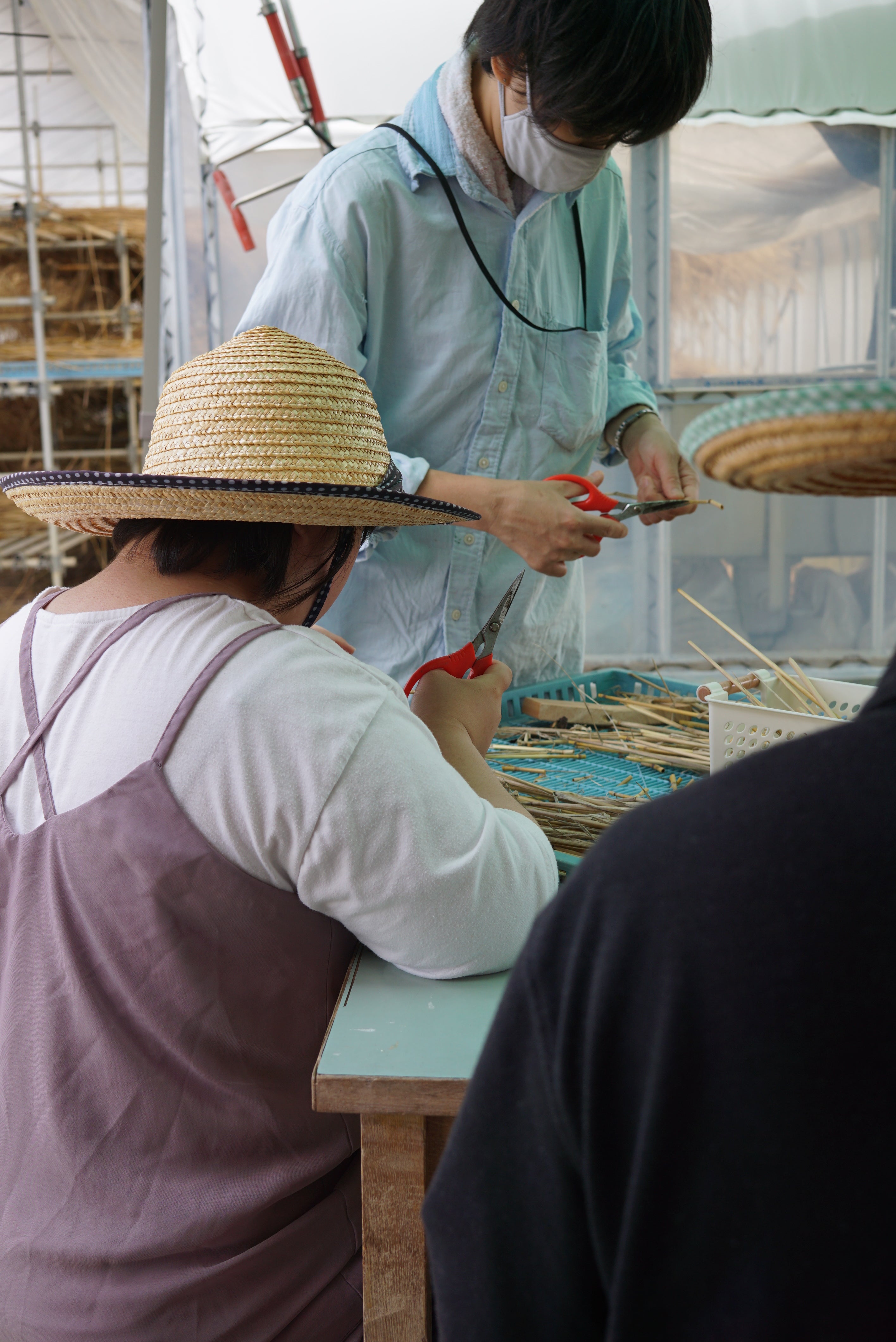

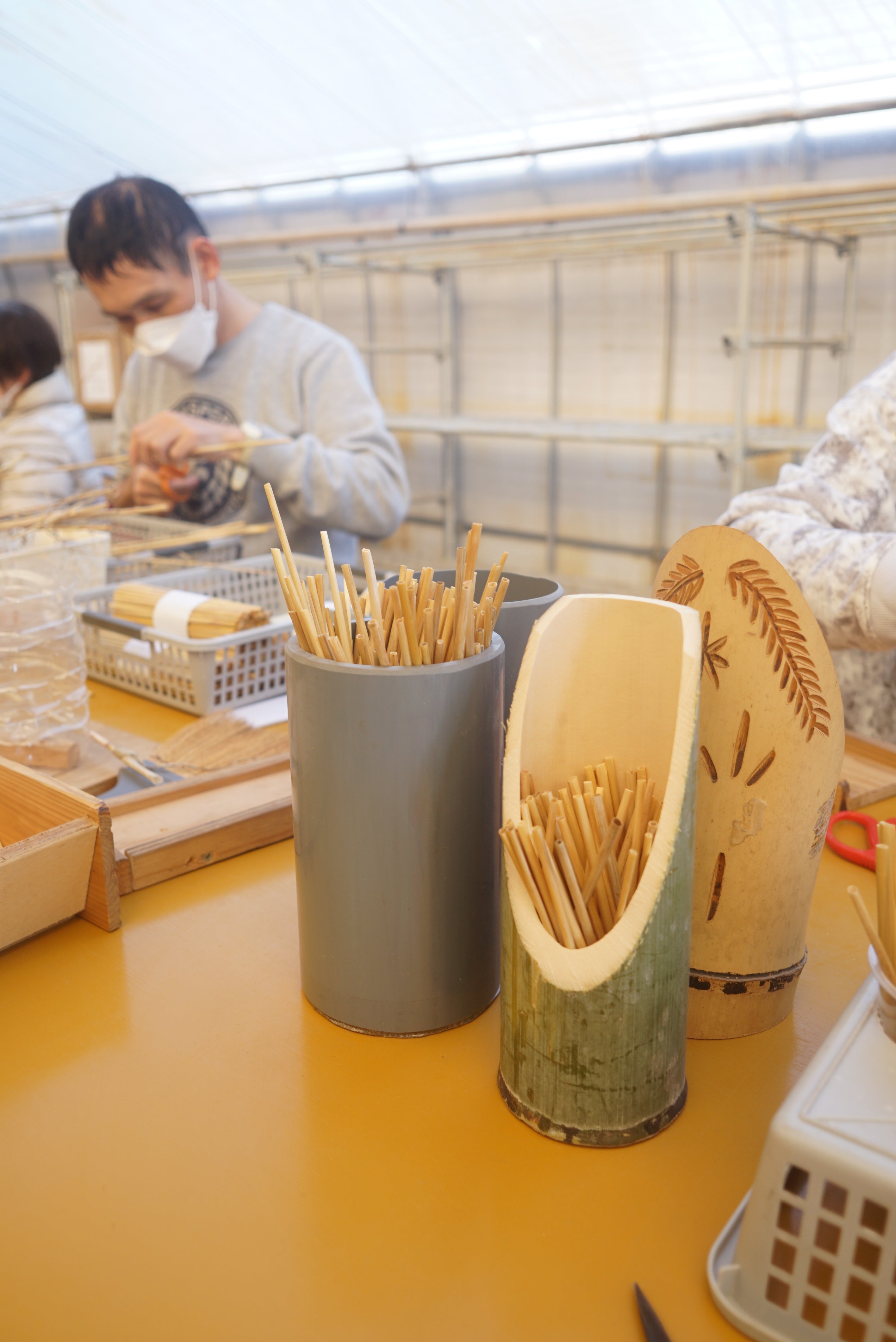

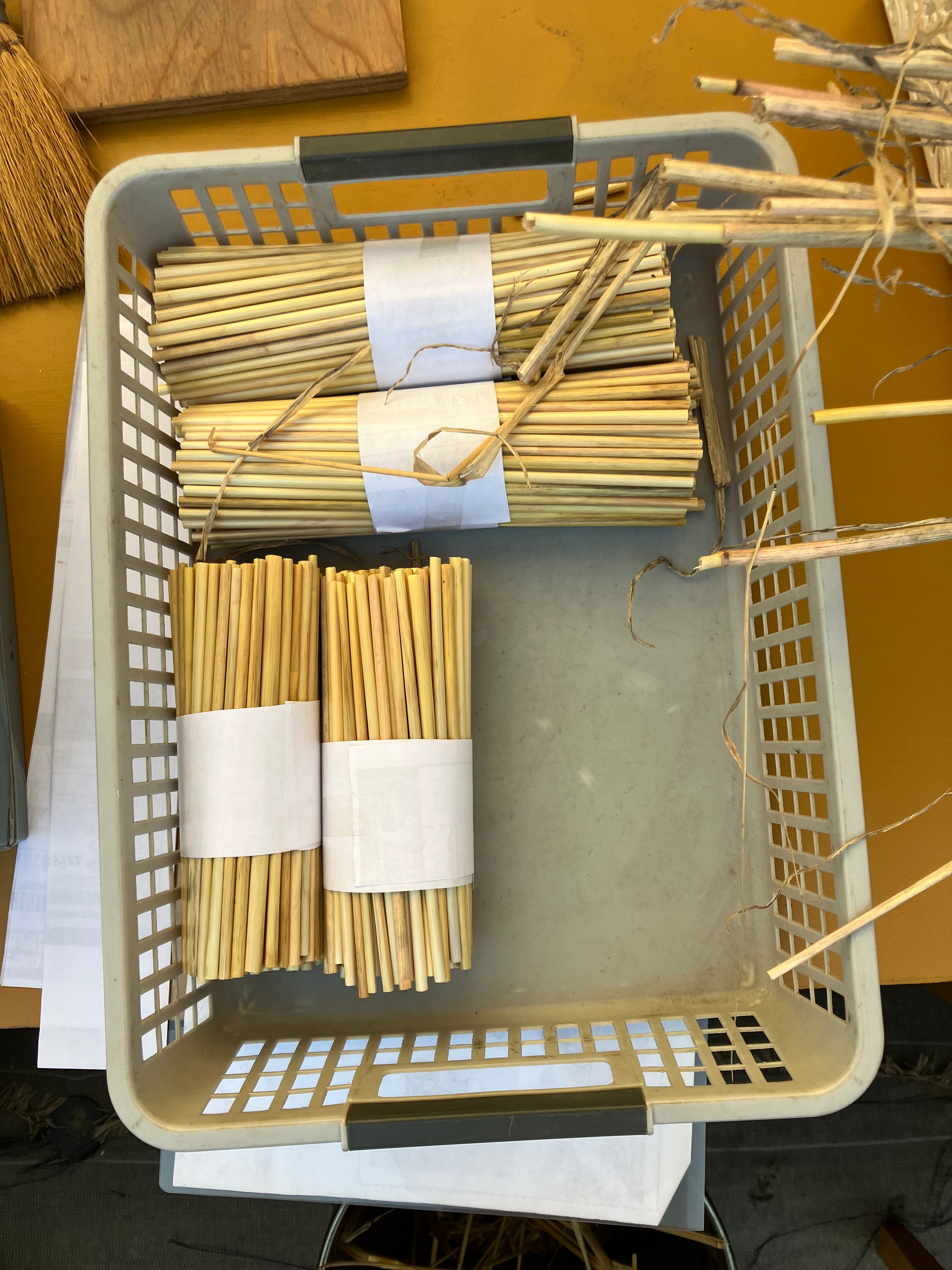
SHOP
NEW ARRIVAL
IN STOCK
LIBATIONS
ABC
JAR
TEA
DRY FOODS
BOOKS
PRODUCT
FRIENDS
TASTE
HOW TO ENJOY
PRODUCERS
STOCKIST
VISIT
mitosaya薬草園蒸留所
〒298-0216
千葉県夷隅郡大多喜町大多喜486
e-mail. cs@mitosaya.com
tel. 0470 64 6041
CAN-PANY / DRINK BAR
〒135-0022
東京都江東区三好2-6-10 1F
e-mail. info@can-pany.com
tel. 03 6751 9106
お酒は20歳になってから
mitosaya botanical distillery
486 Otaki, Otaki-machi, Isumi-gun, Chiba 298-0216 Japan<
e-mail. cs@mitosaya.com
tel. +81(0)470 64 6041
CAN-PANY / DRINK BAR
1F 2-6-10 Miyoshi, Kohto-ku, Tokyo 135-0022 Japan
e-mail. info@can-pany.com
tel. +81(0)3 6751 9106
Alcoholic beverages must be 20 years old.